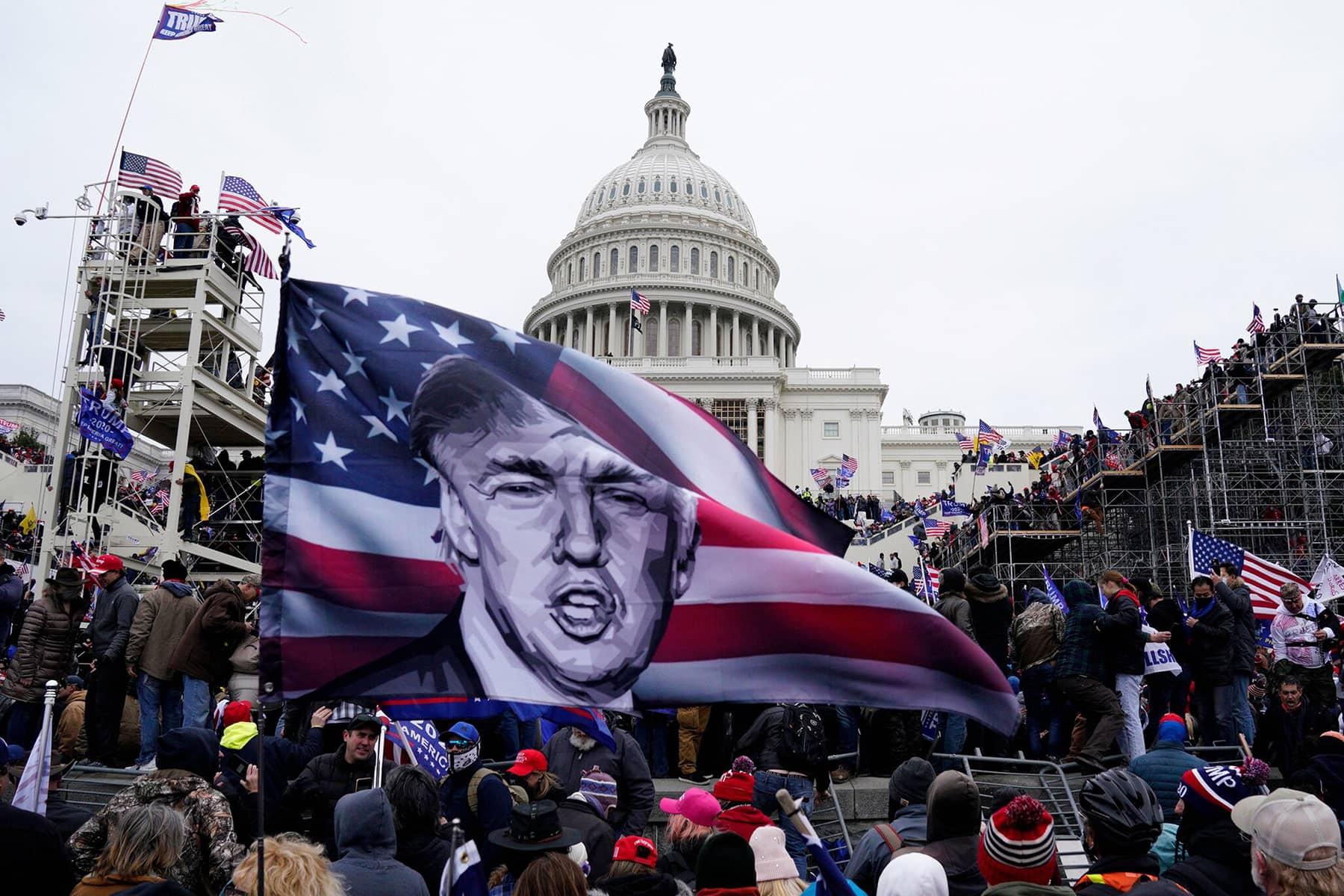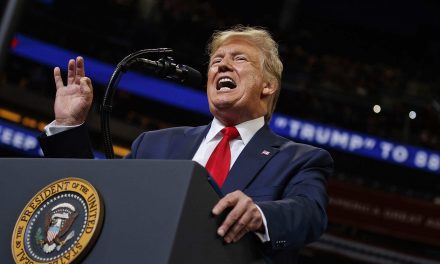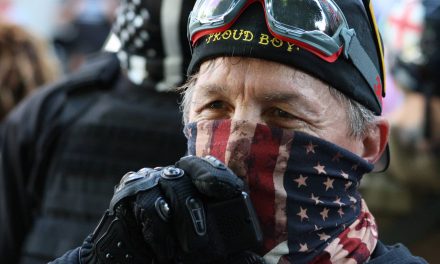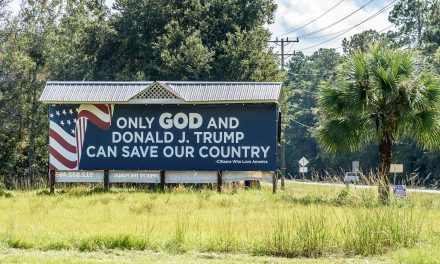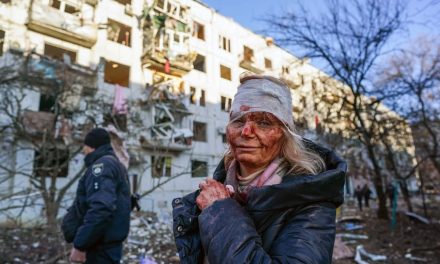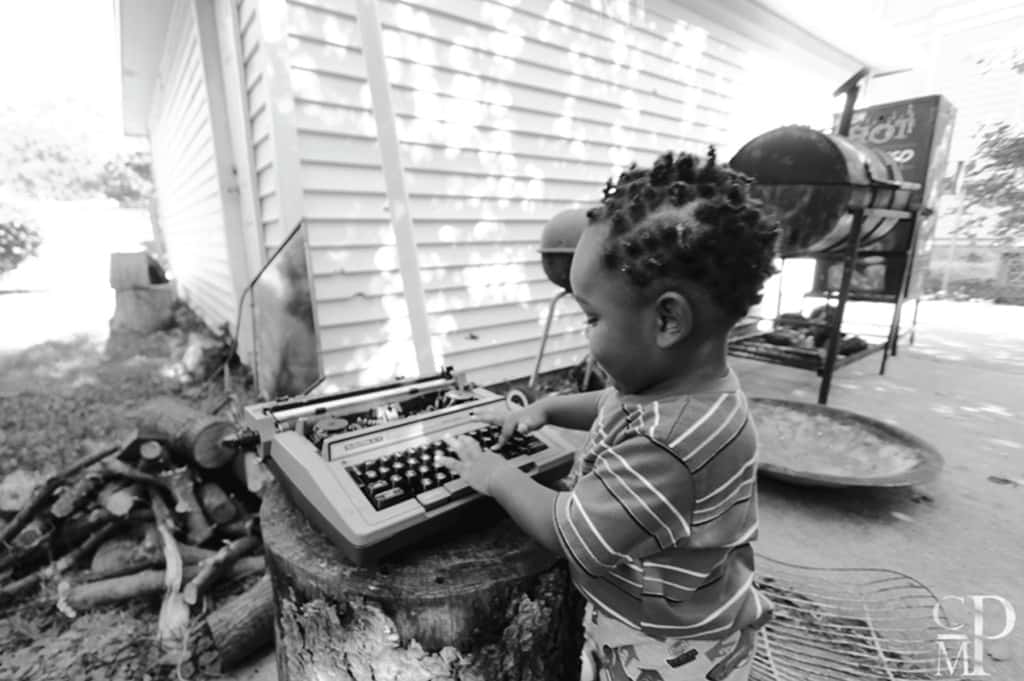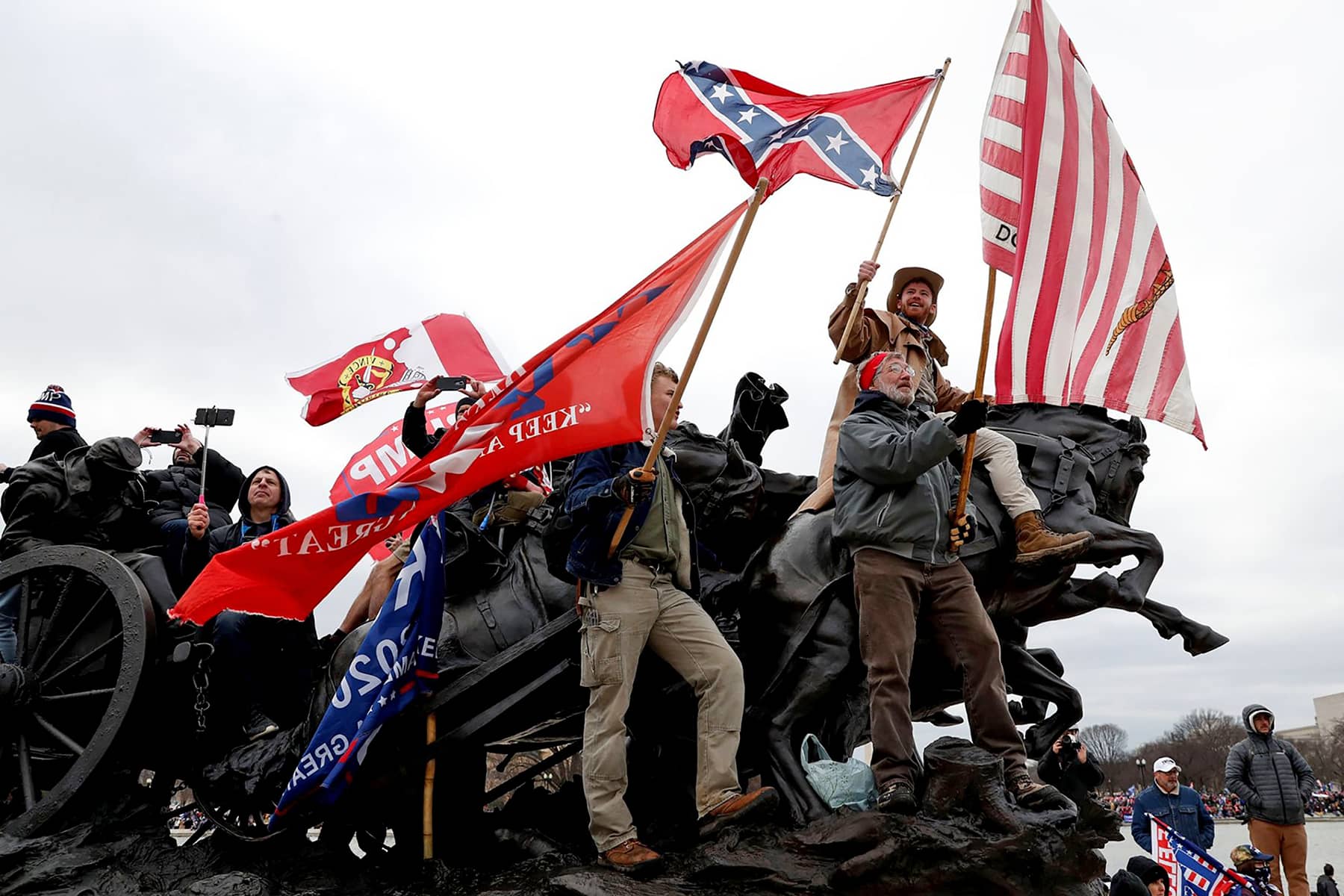
Terrorism is defined as using violence or the threat of violence to achieve political ends. Although the Brooklyn subway shooter has been charged with terrorism, we don’t yet know if he had any actual political goals or was simply mentally ill.
Ted Cruz was closer to the mark when he called the January 6th insurrectionists “terrorists” … at least until Tucker Carlson called him in for a spanking. No more of that kind of talk from Ted.
But it does raise an important question in this era of attempted bombings of the DNC and RNC, the siege of multiple state capitols, running campaign buses off the road, and armed groups roaming our city’s streets trying to pick fights with people they perceive as their political opponents:
How do we break the cycle of political violence?
When a nation begins the transition from a democratic republic to a fascist oligarchy the first step usually involves low-level violence, and the threat of violence, directed against those still embracing democracy.
The world saw this in the “March on Rome” in 1921 by Mussolini’s Blackshirts, his paramilitary force that, in its early days, was roughly analogous to today’s American Proud Boys or Three Percenters. Over the next 4 years, Mussolini was able to use their threats of violence so effectively to paralyze his political opposition with fear that, by 1925, Italy had become a one-party Fascist state.
Hitler followed a similar path, organizing his own rightwing volunteer paramilitary force known as the Brownshirts. Like Mussolini’s Blackshirts, their signature was violently breaking strikes, vandalizing the offices of competing political parties, and committing random acts of violence against people they perceived as leftists, gays, or Jews.
Political violence is the hallmark of fascist, neofascist and authoritarian political movements – on the right and left – as they rise to power, be it Pinochet in Chile, Franco in Spain, or, in modern times, the rise of Modi in India, Bolsonaro in Brazil, Orbán in Hungary and Duterte in The Philippines. Once they achieve power they continue to use violence and the threat of violence to hold power, like Putin in Russia.
When the insiders in the Trump campaign were plotting the “false electors” scheme that led straight to the January 6th attacks, they had already decided that violence – including the murder of the Vice President and Speaker of the House – was an acceptable risk to them.
After all, if they succeeded, they would have control of the government itself and could prevent any investigation or prosecution of themselves, much like Hitler with the burning of the Reichstag. If they failed, Trump still had two months in office, which was plenty of time for him to arrange pardons – as he did for Flynn, Bannon and Stone, among others.
But there is no specific federal law that covers political violence the way hate crimes legislation covers racial, religious and gender-based violence. And, given the echoes of the Blackshirts and Brownshirts in today’s political landscape, Congress should consider fixing that.
Violence against enslaved people and their descendants trying to achieve political power has been a hallmark of American politics from emancipation after the Civil War to this day. Congress finally decided to get serious about civil rights in the 1960s, but passing the Civil Rights Act didn’t put a stop to racially motivated violence.
In 1968 Congress passed the first hate crimes legislation, the Civil Rights Act, which defined as a hate crime any action that “willingly injures, intimidates or interferes with another person, or attempts to do so, by force because of the other person’s race, color, religion or national origin.”
In 1996, Congress added hate crime protections based on religion and the practice of religion with the Church Arson Prevention Act, and in 2009 the Hate Crimes Prevention Act included crimes directed at people because of “actual or perceived sexual orientation, gender identity, disability, or gender.”
None of these laws protect you from being attacked for your politics.
If you are attacked in the streets because of the color of your skin, for holding hands with a same-sex partner, or for wearing a burka the federal government can add a “hate crime” designation to the charges drawn against your attacker and involve the feds. But if you’re attacked in the same way and place by the same person because you have a Biden bumper-sticker on your car, you’re out of luck.
Political violence typically starts small and builds until it reaches a point where either it succeeds in changing a nation’s political structures or is clamped down on and stopped. Europe struggled with this in the 1970s and 1980s with the Red Brigades, the Red Army Faction and ETA (among others). In each case, the violence ended when federal governments took it seriously and cracked down.
The first major eruption of political violence in America was Tim McVeigh’s 1995 bombing of the Federal Building in Oklahoma City, killing 168 people and injuring another 680. More recently, federal agents were assaulted without consequences by the Bundy family, which also seized federal property here in Oregon.
Ammon Bundy’s actions turned him into a minor celebrity in neofascist circles; embraced by many within the GOP, he flirted with a run for governor in Idaho earlier this year. Others have since attacked multiple state capitols and even plotted to kidnap a governor, in rehearsal for and leading up to the January 6th attack on the US Capitol.
The law enforcement arms of the federal government generally want to stay out of political fights. Politics, after all, is how we decide, create, and implement our laws; interference in politics by those charged with enforcing the laws could be extraordinarily problematic.
Legislating anything having to do with politics, particularly in the context of criminal law, has the potential to turn out really ugly; it is essentially where both Hitler and Mussolini ended up by the 1930s.
But just like other types of escalations, hate crimes based on politics tend to accelerate until either the government reacts and cracks down or is seized by the group using violence itself. We also saw this in the 1930s in Germany and Italy.
As U.S. District Judge Reggie Walton, a Bush appointee, said this week when sentencing a January 6th insurrectionist:
“I think our democracy is in trouble because, unfortunately, we have charlatans like our former president who doesn’t, in my view, really care about democracy but only about power.”
Whether America should add political violence to our existing hate crime laws, create a new category of political hate crime, or deal with our crisis of political violence in some other way is best left to a healthy debate within our legislative branch of government.
But when a guy shooting up a subway car is charged with terrorism, but a group kills six people and seizes the U.S. Capitol while trying to end the rule of law in America is not, something is out of kilter. Congress must act.
Аlеx Gаkоs
© Thom Hartmann, used with permission. Originally published on The Hartmann Report as How Do We Break the Cycle Of Political Violence?
Subscribe to The Hartmann Report directly and read the latest views about U.S politics and other fascinating subjects seven days a week.

